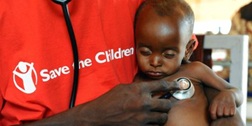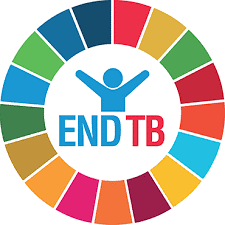
“If we want to shape the future to truly improve the world, we have 1000 days to do it, mother by mother, child by child.” -- Roger Thurow
1000 Life-Changing Days
The first 1000 days of human life hold both great potential and tremendous vulnerability. What happens in those 1000 days, counted from the beginning of pregnancy to a child’s second birthday, determines to a large extent the course of that child’s life -- how well they will grow, learn, work, and thrive.
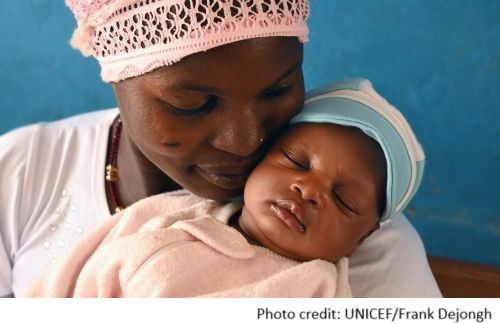
Mother and Child
The health of a mother and her child are intertwined during the first 1000 days. During pregnancy and breastfeeding, the mother’s diet is the only source of nutrition for the growing and developing baby. Recent estimates indicate that half of the global cases of stunting in early childhood originate during the 500 days between conception and 6 months of age, when the child is dependent on their mother for nutrients.1 Whatever causes malnutrition for the mother – a shortage of food, a deficiency of micronutrients, an illness triggered by contaminated water or poor sanitation, or a disease like malaria -- can also lead to fetal and infant malnutrition. Maternal malnutrition can cause anaemia, pre-eclampsia, hemorrhage, and death in mothers, and can lead to preterm delivery, low birthweight, infant mortality, wasting, and developmental delays for their babies.2
The Right Nutrients at the Right Time
Much of a child’s future is determined by the quality of nutrition they receive in those important 1000 days. If a child does not get the right nutrients during this formative period, the damage is often irreversible. Ensuring a child receives adequate nutrition during this critical 1000-day window can yield dividends for a lifetime: a well-nourished child will more effectively fight off disease, perform better in school, and be more productive as an adult. Good nutrition in the first 1000 days contributes not just to the well-being of the individual child, but to their community’s long-term health, stability, and prosperity.
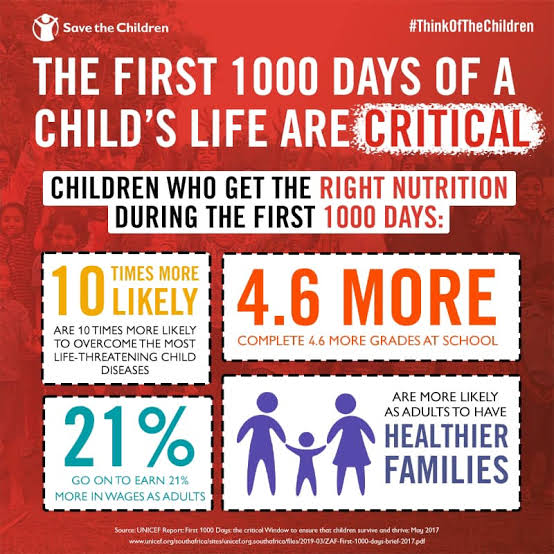
Proven, Cost-Effective Solutions
In the long-term, strong and sustainable local food systems are needed to provide nutritious, safe, and affordable diets for everyone’s health and well-being. But, in the here and now, when undernutrition and nutrient deficiencies endanger lives and futures, nutrition interventions are vitally important.
Here are proven ways to address malnutrition and prevent child deaths in the first 1000 days:
- Supply all pregnant women with prenatal vitamins. Multiple Micronutrient Supplements (MMS) contain 15 essential vitamins and minerals to treat anaemia and improve the nutritional status of pregnant women at a cost of just $4 per pregnancy.3 They are one of the most affordable and effective ways to support the nutritional health of mothers and prevent malnutrition in children.
- Provide timely malaria treatment for pregnant women.
- Promote exclusive breastfeeding (nothing but breastmilk for the first 6 months of life) and provide counselling and support to breastfeeding mothers.
- Provide Vitamin A and zinc supplementation to children to strengthen immune systems, prevent blindness, and treat diarrhea.
- Provide Ready-to-Use Therapeutic Food (RUTF) for children threatened by severe wasting. RUTF is an energy dense, life-saving micronutrient paste made using peanuts, sugar, milk powder, oil, vitamins and minerals that treats severely malnourished children between 6 months and 5 years of age. (Note: The first priority of any nutrition program should be to make wasting treatment unnecessary by preventing children from becoming wasted. Unfortunately, at present, millions of children every year still require treatment for wasting.)
- Invest in community-based health care - Community health workers and midwives meet critical needs in their communities in the first 1000 days by counseling pregnant mothers about nutrition, distributing vitamins and other micronutrients, promoting and supporting exclusive breastfeeding, providing information about appropriate foods to begin complementary feeding at 6 months, promoting hygiene and sanitation, screening children for malnutrition, and treating diarrhea and pneumonia.
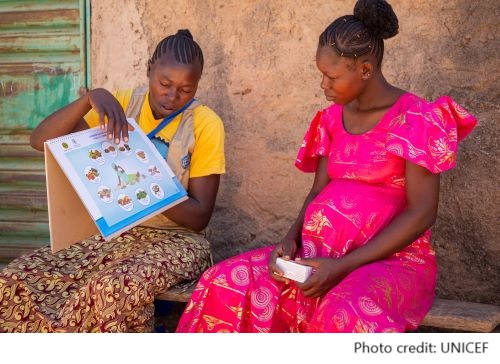
Investments in nutrition are some of the most powerful and cost-effective in global development. For the greatest impact, they need to go hand in hand with support for education and health care systems, vaccination programs, and projects that improve access to healthy food, safe water, sanitation, and hygiene. With political will and sufficient funding, we can end malnutrition, save lives, and help ensure that every child has the chance to reach their full potential.
Dig Deeper...
- Did you know that Canada is the world's largest donor to global Vitamin A programs, supplying as much as 75% of the world's Vitamin A supplements? Watch this 1-minute video from Nutrition International to learn more. Learn also about Canada's life-saving contributions to treat diarrhea through the Zinc Alliance for Child Health in this 2-minute video.
- The Life-saving Peanut Paste -- Watch this life-affirming 1-minute video from UNICEF on RUTF "the wonder food".
- Maternal Nutrition: Preventing Malnutrition in Pregnant and Breastfeeding Women -- Read UNICEF's 10 key actions for supporting the nutritional health of women and adolescent girls.
- From a small initiative established by the Canadian government over 30 years ago with the goal of eliminating micronutrient deficiencies, with a specific focus on saving children's lives, Nutrition International has since grown into an independent global nutrition organization. Learn about their work in this 2-minute video and then browse their website and be inspired by the work this Canadian organization is doing around the world to improve nutrition for all.
- Watch this 2-minute video introduction to the book The First 1,000 Days: A Crucial Time for Mothers and Children – and the World by Roger Thurow. Read the book and meet mothers in Uganda, India, Guatemala and Chicago as they do their best to ensure the health of their growing babies. Follow up by listening to this 30-minute podcast, an interview with the author after his return 10 years later to see what progress had been made in the lives of the mothers and children he met while researching his book.
- Towards 2030: Strengthening Canadian Leadership in Nutrition -- This document highlights Canada's legacy as a "nutrition champion" and lays out the case for pledging further nutrition investments at the upcoming international Nutrition for Growth Summit .
- Plan to join us this Wednesday, January 22 at 1:00 p.m. ET for our GRAN webinar on Improvements in Child Nutrition in Nepal with Dr. Tina Moffat. Click here to register.
[This is the fourth installment of GRAN Small Sips focused on child hunger.]


